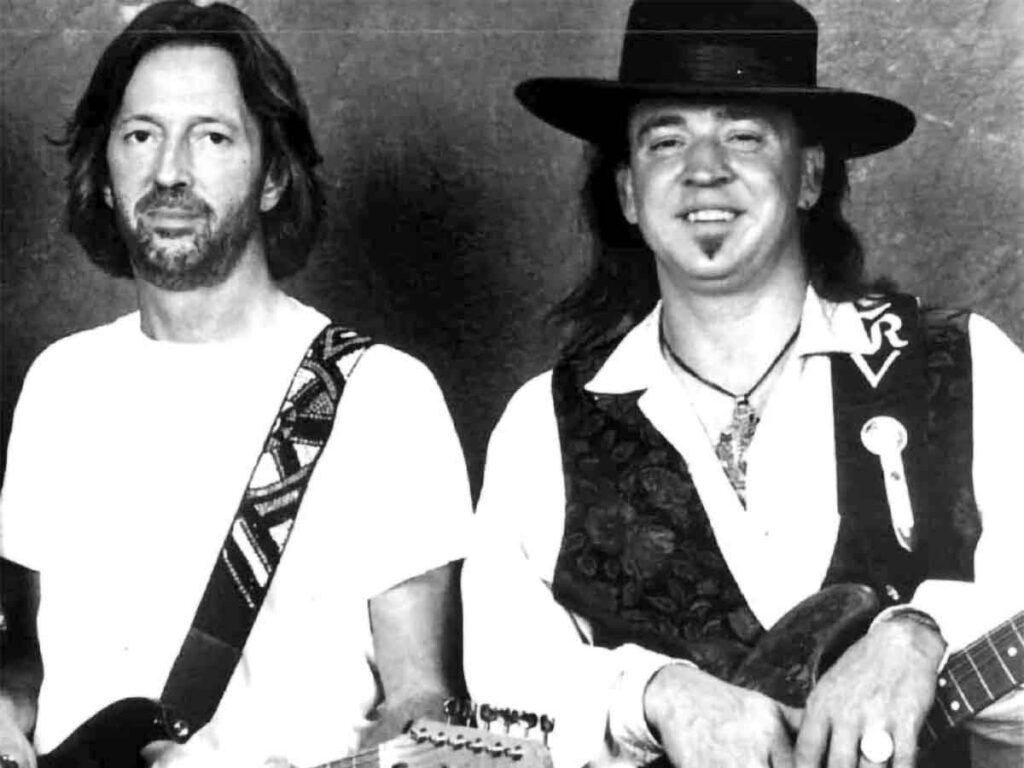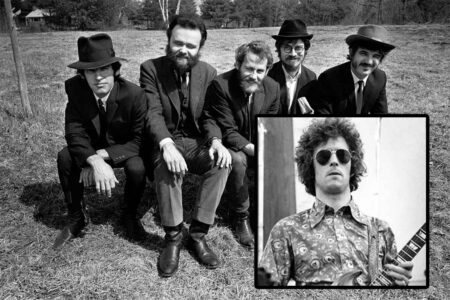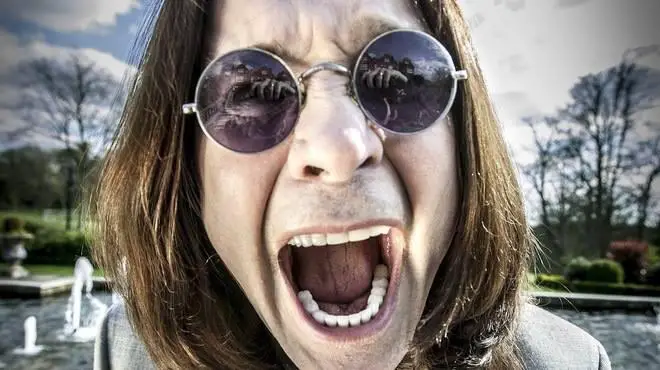On the night of August 26, 1990, Stevie Ray Vaughan took the stage at Alpine Valley Music Theatre in East Troy, Wisconsin. For blues fans, it was just another incredible lineup of guitar giants. But as history now knows, that night became one of the most heartbreaking in music lore.
Stevie Ray Vaughan, often hailed as the second coming of Texas blues, had redefined electric guitar in the 1980s. He channeled the soul of Albert King and Jimi Hendrix but added a ferocious tone and rhythmic precision all his own. After years of personal turmoil, he’d emerged sober, focused, and arguably better than ever.
His tragic death in a helicopter crash just hours after that Alpine Valley set left the world reeling. Eric Clapton, who headlined the concert and narrowly missed being on the same helicopter, later described Vaughan’s final performance with awe: “There was no one better than him on this planet. Really unbelievable.”
Clapton’s words reflect not just the loss of a musician, but the triumph of a man who had found peace before the end.
One Last Night at Alpine Valley
August 26, 1990, was more than just another show—it was a gathering of blues royalty. Sharing the bill that night were Eric Clapton, Buddy Guy, Robert Cray, Jimmie Vaughan (Stevie’s brother), and Stevie Ray himself. The venue, Alpine Valley Music Theatre, was packed with over 30,000 fans ready for a night of guitar fireworks.
Stevie had just finished a blistering collaborative encore of “Sweet Home Chicago” with the others. Clapton would later say, “He had all of us standing there with our jaws dropped.”
But weather conditions grew dangerous. Heavy fog blanketed the area, creating treacherous visibility for the helicopters set to fly artists back to Chicago. Vaughan, eager to return early, boarded a chopper around midnight. Minutes later, it crashed into a nearby ski slope, killing everyone on board.
From the Abyss to Artistic Clarity
Just four years before that fateful night, Stevie Ray Vaughan was teetering on the edge. Years of cocaine and alcohol abuse had taken their toll, nearly ending his life during a European tour in 1986. Recognizing the severity of his addiction, he entered rehab and began the difficult road to sobriety.
This marked a turning point not only in his personal life but in his music. Where earlier recordings had a raw, unfiltered fire, his later work showed refinement, clarity, and deeper emotional resonance.
His 1989 album In Step was the first he recorded entirely sober. Tracks like “Wall of Denial” and “Tightrope” didn’t just groove—they told his story. As Vaughan said during a 1989 Guitar World interview: “The real deal is playing sober… being alive to play is what counts.”
Fans and critics alike noticed the change. In Step won a Grammy for Best Contemporary Blues Album and reaffirmed Vaughan’s place at the top of the blues world.
Clapton’s Eyes: Witness to a Masterclass
Eric Clapton has shared stages with nearly every guitar legend imaginable. Yet, his recollection of Vaughan’s final performance stands apart: “Robert Cray and Jimmie Vaughan and Buddy Guy were just watching in awe,” he remembered in a 1996 MTV interview. “There was no one better than him on this planet.”
It’s worth noting that Clapton’s own history with addiction mirrored Vaughan’s. Both men had clawed their way out of substance abuse, using music as both lifeline and therapy. That night, Clapton saw more than a talented peer—he saw a man fully in command of his gift, alive with purpose.
It wasn’t just the speed or technique. Vaughan’s tone, phrasing, and command of the stage that night seemed to channel something otherworldly. According to those who witnessed it, he played with the power of a man who had found clarity and redemption—and had nothing left to prove.
A Legacy Cast in Light and Shadow
The blues world fell silent in the wake of Vaughan’s death. Clapton, devastated by the loss, dedicated performances and interviews to Stevie’s memory. In 1991, he recorded the haunting instrumental “S.R.V.” for the soundtrack to Rush, as a quiet tribute.
But Vaughan’s impact didn’t fade. His recordings gained even more reverence. Guitarists across genres cite him as a pivotal influence, and his tone is still studied, imitated, and marveled at by aspiring players worldwide.
The footage of that final show, though limited, has become almost sacred. Fans revisit it not just to mourn, but to marvel—to witness the closing chapter of a career that, while tragically short, was immensely powerful.
Today, Stevie Ray Vaughan is seen as a bridge between the old blues masters and the new wave of guitar-driven rock. He carried tradition forward while pushing the genre into new territory.
A Blues Legend’s Last Bow
It’s hard not to wonder what might have been. At just 35, Stevie Ray Vaughan had overcome demons that destroyed countless others. He was sober, loved, and creatively on fire. His playing that final night reflected all of it.
Clapton’s words serve not only as a eulogy, but a reminder: we lost not just a guitarist, but a survivor—a man who had reclaimed his art and soul.
And maybe, in the end, that’s why that last performance still resonates so deeply. Because Stevie didn’t just go out playing his best. He went out free.




